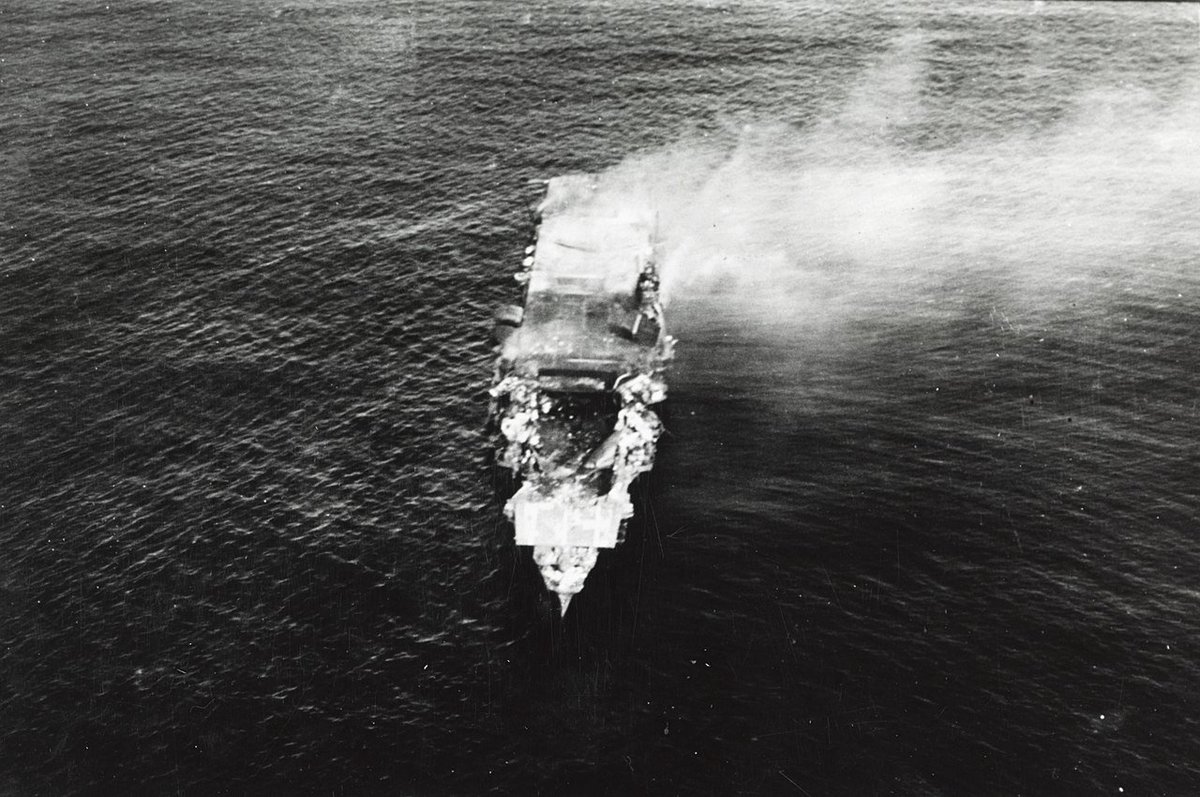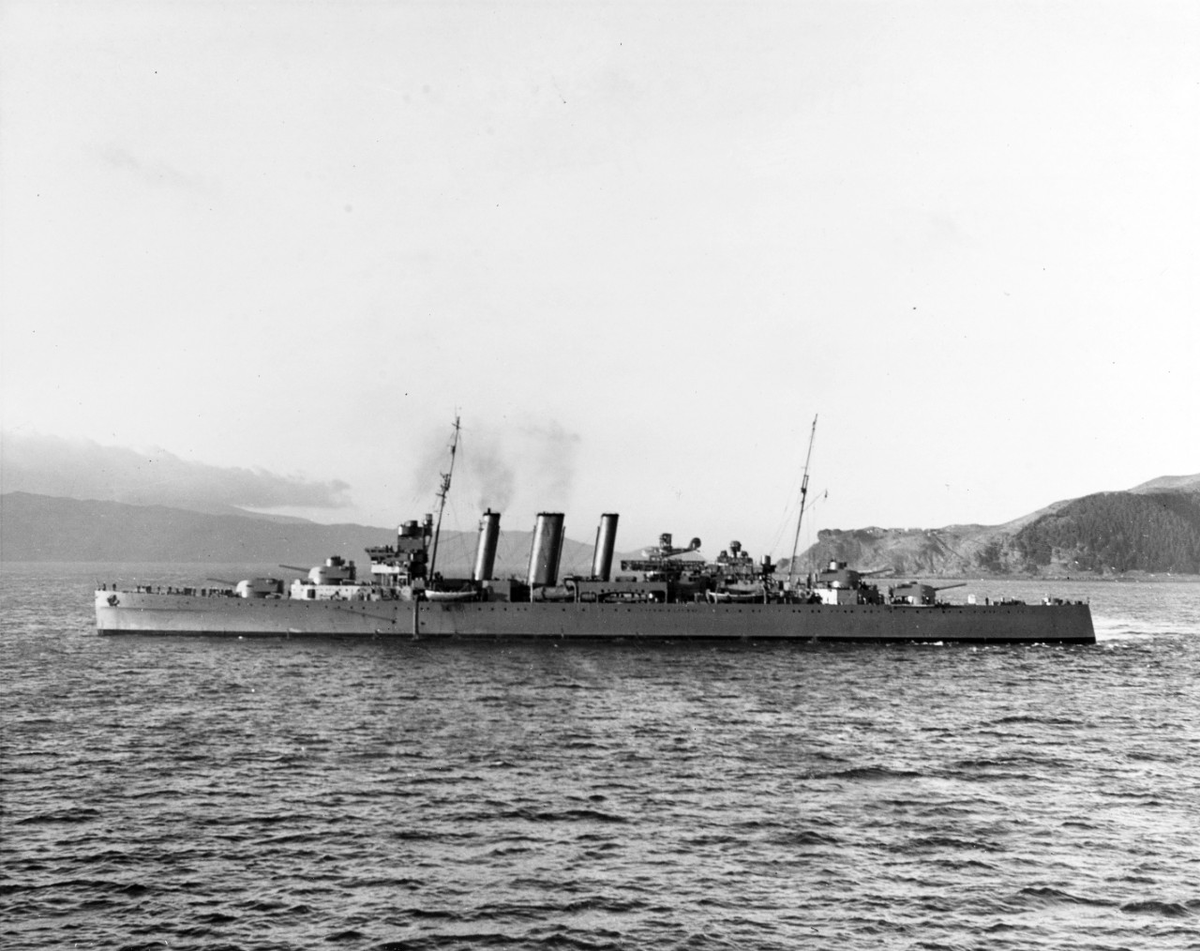
Thread: #OnThisDay 1942 the Battle of the Savo Island took place between the Imperial Japanese Navy and United States Navy. The battle was the US Navy's worst defeat of World War 2 and the first in a series of vicious naval battles for control of the island of Guadalcanal. 

With the momentous victory at Midway, Commander-in-Chief US Fleet Admiral Ernest J. King has the opportunity to use his still limited forces to take the initiative against the Japanese in the South Pacific, and Guadalcanal soon becomes the focus of this first American offensive. 

When in early July 1942, American radio intelligence indicated the Japanese were building an airfield on Guadalcanal threatening to endanger the supply lines to Australia, the US 1st Marine Division was hastily assembled to secure Guadalcanal, Tulagi and Gavutu-Tanambogo. 

As such, on August 7th 1942 marines of the 1st Marine Division land on Guadalcanal and adjacent Florida Islands, upon receiving word of the American landings Admiral Mikawa at Rabaul decides to gather his forces and attack the American forces with little idea of their strength. 



Mikawa’s force of mainly older warships is made up of the heavy cruisers Chokai, Aoba, Kako, Kinugasa, Furutaka, light cruisers Tenryu, Yubari and destroyer Yunagi. Mikawa plans to use the IJN's well developed night fighting doctrine to attack the American naval forces at night. 

As Mikawa force steams out of Rabaul, they pass right over submarine S-38 who reports warships passing over her, but admiral Turner command is unconcerned by the report believing any Japanese force would be spotted by allied reconnaissance aircraft before reaching Guadalcanal. 



Indeed, the next morning Mikawa's force is spotted by two Royal Australian Air Hudson's, but huge communication delays ensure it takes until late in the evening for the pilots report's to reach Turner, with one fatefully reporting sighting 'two gunboats or seaplane tenders'. 

After being spotted Mikawa's force grimly awaits an air attack that never comes and having astutely timed the advance of his force down the slot to avoid the morning air searches, with many having not taken place due to poor whether, Mikawa pushes on determined to strike. 

Awaiting them off Northeast Guadalcanal were two groups of Allied warships under the command of Admiral Crutchley. The Southern group consisted of 3 heavy cruisers, 2 Australian, 1 American with 2 destroyers with the Northern group consisting of 3 heavy cruisers and 2 destroyers. 



However, Crutchley on HMAS Australia would be called away for a conference with Turner regarding admiral Fletcher's decision to withdraw his carriers, but fatefully Crutchley would fail to inform the Northern group of his departure and placed Cpt Bode on USS Chicago in command. 



With August 9th less than an hour away, Turner is finally informed the air searches have only been partially completed or not completed at all, and with the report of 'seaplane tenders' with the Japanese force spotted much earlier he concludes it will establish a seaplane base. 

Although undoubtedly let down by insufficient reconnaissance and a convoluted communication system Turner makes the critical error of determining what the Japanese will do and not taking action against what they could do, especially with cruisers reported with the Japanese force. 

Now in the dead of night powering toward Savo Island with suprise on their side Mikawa's force very much intends to act. Leading his force in his flagship Chokai, Mikawa plans to sweep around Savo Island and overwhelm the American naval forces with torpedoes and cruiser gunfire. 

Approaching Savo Island Mikawa's force manages to avoid the destroyers Blue and Ralph Talbot who fail to detect Mikawa's force on their radar's whilst aboard the allied warships their exhausted crews spot the Japanese cruiser floatplanes launched to illuminate the battlefield. 

Passing by Savo island shortly after 01:30 Chokai sights HMAS Canberra of the Southern group and at 0138 Chokai begins the battle by launching 4 torpedoes at the southern group shortly followed by her main guns as the rest of Mikawa's cruisers begin smothering Canberra with fire. 



As Mikawa's force swings around Savo island firing furiously, their targets illuminated by flares from their floatplanes, they shatter HMAS Canberra's topside, killing her captain, cutting her power and leaving her listing with hits under her waterline. 

Desperately confused to see Canberra coming under fire and manoeuvring violently, USS Chicago's bow is smashed by a torpedo with another hitting her stern but luckily not exploding. Chicago struggles to bring her main batteries to respond but her 5-inch guns strike the Tenryu. 

Nevertheless, Chicago moves away from engagement and transports she is meant to protect, with Captain Bode astonishingly failing to inform the northern group of what is taking place, meaning that the northern group has little idea what is coming as Mikawa's force swings north. 

As Mikawa's force moves to engage the northern group, his cruisers split into two groups who move forward on either side of the northern group. As they prepare to engage the 3 American cruisers they smother them with searchlights revealing a scene of panic and confusion aboard. 

Just after 01:50 Mikawa's cruisers unleash a wave of well aimed cruiser gunfire at the three New Orleans class heavy cruisers USS Vincennes, USS Astoria and USS Quincy. Soon all three are aflame with the damage to their cruiser floatplanes fuelling overpowering fire aboard. 





In a state of supreme surprise and confusion the crews aboard the three cruisers do their best to respond as their captain's struggle desperately to understand what is happening. Quincy is able to score an 8-inch hit on Chokai striking her chartroom and almost killing Mikawa. 

But under an overwhelmingly torrent of accurate cruiser gunfire on two sides and with Quincy and Vincennes having been struck by multiple torpedoes the American cruisers are shattered and left to their inevitable fate as their crews fight desperately to survive. 

As Mikawa's cruisers leave the carnage they have just inflicted they still have plenty of ammunition left for the now highly exposed American transports off Guadalcanal, but his warships are seriously out of formation, and he is informed it will take two hours for them to reform. 



The two hours it would take to reform his force and then attack the American transports off would leave his force painfully exposed to American air attack from the American carriers Mikawa is sure are nearby covering the landing especially as his presence was very much known now. 

Indeed he is well aware of the fate of the Mogami class heavy cruisers Mikuma and Mogami to air attack sunk and severely damaged respectively at the battle of the Midway thus Mikawa decides not to risk his precious warships to air attack that morning by attacking the transports. 

Besides, Mikawa can be content that he has just achieved an overwhelming victory against the American naval forces off Guadalcanal and has been assured by the Imperial Japanese Army at Rabaul that they will easily throw the American intruders off Guadalcanal. 

But what Mikawa could not have known is that the very carriers he feared so much had moved away from the area hours before, greatly reducing threat he face. Nevertheless, with the information Mikawa had he understandably choose to prioritise his precious warships. 

As such his force moved back up the slot having achieved a remarkable victory, but it would not escape without lose as when Crudiv 6 detached from the force to head to Kavieng on New Ireland it was hit by three torpedoes from submarine S-38 and quickly sank. 

At the battle of Savo island, despite the best efforts of the allied sailors HMAS Canberra, USS Vincennes, USS Astoria and USS Quincy would all eventually sink, with allied losses coming to 1077 sailors killed, almost as many as all the Marines that would die in the campaign. 

The Japanese would only lose 129 sailors, with 71 of those being when Kako (below) was torpedoed by S-44. But despite their triumph, the IJA would not easily sweep the marines from Guadalcanal as it assured Mikawa it would and the bitter battle for Guadalcanal was far from over. 

To finalise this thread I will quote Mark Stille, "Mikawa did not know it at the time, but he had just squandered the IJN's best chance of delivering a knockout blow to the first American offence in the Pacific. It is hard to imagine the Americans holding onto their lodgement" 

"following the destruction of their transport fleet and their supplies still on board. The destruction of the American transports would have been worth the the sacrifice of Mikawa's entire force". 

Many of the photos are courtesy of the Naval History and Heritage Command.
Please let me know of any mistakes.
End of thread. Thank you.
Please let me know of any mistakes.
End of thread. Thank you.
@The_Ops_Room @ChrisCardsFan @jerijerod14 @PJFXMooney @ErnestMalley @DWB55 @MoseleyMAJ @DanJBray @RoryKGallagher @Rich_Ships @Axe99 @ArmouredCarrier @madeofstone71 @291stECB @DrydockDreams
Bit of a mega thread that might be of interest, please just DM if not. 🙂
Bit of a mega thread that might be of interest, please just DM if not. 🙂
• • •
Missing some Tweet in this thread? You can try to
force a refresh







